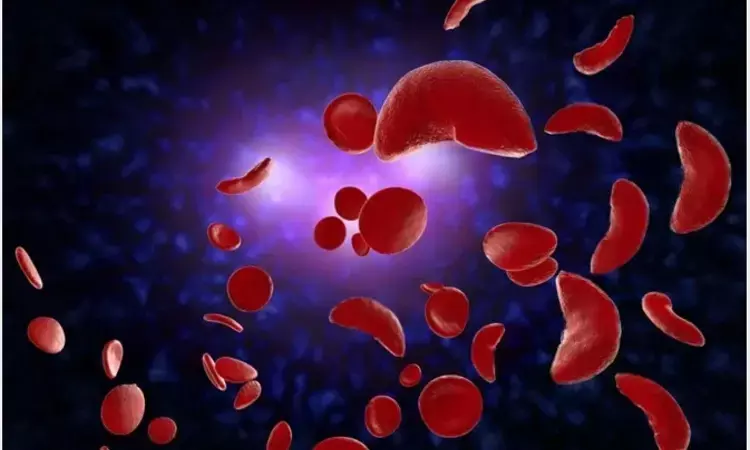- Home
- Medical news & Guidelines
- Anesthesiology
- Cardiology and CTVS
- Critical Care
- Dentistry
- Dermatology
- Diabetes and Endocrinology
- ENT
- Gastroenterology
- Medicine
- Nephrology
- Neurology
- Obstretics-Gynaecology
- Oncology
- Ophthalmology
- Orthopaedics
- Pediatrics-Neonatology
- Psychiatry
- Pulmonology
- Radiology
- Surgery
- Urology
- Laboratory Medicine
- Diet
- Nursing
- Paramedical
- Physiotherapy
- Health news
- Fact Check
- Bone Health Fact Check
- Brain Health Fact Check
- Cancer Related Fact Check
- Child Care Fact Check
- Dental and oral health fact check
- Diabetes and metabolic health fact check
- Diet and Nutrition Fact Check
- Eye and ENT Care Fact Check
- Fitness fact check
- Gut health fact check
- Heart health fact check
- Kidney health fact check
- Medical education fact check
- Men's health fact check
- Respiratory fact check
- Skin and hair care fact check
- Vaccine and Immunization fact check
- Women's health fact check
- AYUSH
- State News
- Andaman and Nicobar Islands
- Andhra Pradesh
- Arunachal Pradesh
- Assam
- Bihar
- Chandigarh
- Chattisgarh
- Dadra and Nagar Haveli
- Daman and Diu
- Delhi
- Goa
- Gujarat
- Haryana
- Himachal Pradesh
- Jammu & Kashmir
- Jharkhand
- Karnataka
- Kerala
- Ladakh
- Lakshadweep
- Madhya Pradesh
- Maharashtra
- Manipur
- Meghalaya
- Mizoram
- Nagaland
- Odisha
- Puducherry
- Punjab
- Rajasthan
- Sikkim
- Tamil Nadu
- Telangana
- Tripura
- Uttar Pradesh
- Uttrakhand
- West Bengal
- Medical Education
- Industry
Capsaicin successfully reduces pain sensitivity in patients with sickle cell disease: Study

USA: In sickle cell disease (SCD), TRPV1 (transient receptor potential vanilloid-1) plays an important role in the development of hypersensitivity and capsaicin shows potential therapeutic benefits, states the SPICE trial data published in the eJHaem.
The SPICE (Sickle cell Pain: Intervention with Capsaicin Exposure) trial was a pilot safety and feasibility trial of high-dose (8%) topical capsaicin treatment for patients with SCD and recurrent/chronic pain with neuropathic features.
Sickle cell disease (SCD) is a group of inherited red blood cell disorders. Pain is the leading cause of daily suffering in individuals with SCD, with variable clinical pain phenotypes. Neuropathic pain( NP) and neuropathy usually remain underinvestigated and undertreated in these patients. Patient-reported outcome (PRO) measures indicate NP prevalence among SCD patients of 25%–40%.
Evidence suggests NP develops over time in sickle cell disease (SCD), contributing to a complex, difficult-to-treat phenotype, with management based on scant evidence. One characteristic of NP found is hyperalgesia caused by nervous system sensitization, but risk factors for this have not been identified within the SCD population, as exact mechanisms leading to its development are not well defined.
Previous studies have shown a potentially important role of transient receptor potential vanilloid-1 (TRPV1) in the transition from recurrent vaso-occlusive pain to peripheral sensitization, and perhaps subsequently to central sensitization in SCD. The 8% topical capsaicin, an excitotoxin causing reversible degeneration of sensitized TRPV1 has proven as efficacious as gabapentinoids in treating NP in certain disease states but has not been studied in SCD.
Alexander K., Central Michigan University College of Medicine, Michigan, USA and his research team conducted the SPICE trial to explore capsaicin's utility as a mechanistic probe and adjunctive pain treatment for patients with SCD and recurrent/chronic pain with neuropathic features.
The research team enrolled 10 participants who identified "target" sites of pain with NP-type qualities and consented to treatment with 8% topical capsaicin. The primary endpoint was safety/tolerability. The novel Localized Peripheral Hypersensitivity Relief score (LPHR) was developed to determine improvement in sensitivity attributable to TRPV1 neutralization.
Key findings of the trial,
• There were no severe treatment-related adverse events.
• Higher baseline pain sensitivity at a given body site was associated with a self-reported history of more frequent localized vaso-occlusive pain episodes at that site.
• There was a statistically significant improvement in the mean LPHR.
The authors conclude that TRPVI is important to the development of hypersensitivity. The study results also show that capsaicin is well tolerated and is efficient in reducing pain sensitivity in treated areas, demonstrating its feasibility as a probe for future investigations.
Reference:
Alexander K. Glaros,Michael U. Callaghan,Wally R. Smith,Ahmar U. Zaidi. First published: 19 July 2022. https://doi.org/10.1002/jha2.528
BDS
Dr. Hiral patel (BDS) has completed BDS from Gujarat University, Baroda. She has worked in private dental steup for 8years and is currently a consulting general dentist in mumbai. She has recently completed her advanced PG diploma in clinical research and pharmacovigilance. She is passionate about writing and loves to read, analyses and write informative medical content for readers. She can be contacted at editorial@medicaldialogues.in.
Dr Kamal Kant Kohli-MBBS, DTCD- a chest specialist with more than 30 years of practice and a flair for writing clinical articles, Dr Kamal Kant Kohli joined Medical Dialogues as a Chief Editor of Medical News. Besides writing articles, as an editor, he proofreads and verifies all the medical content published on Medical Dialogues including those coming from journals, studies,medical conferences,guidelines etc. Email: drkohli@medicaldialogues.in. Contact no. 011-43720751


